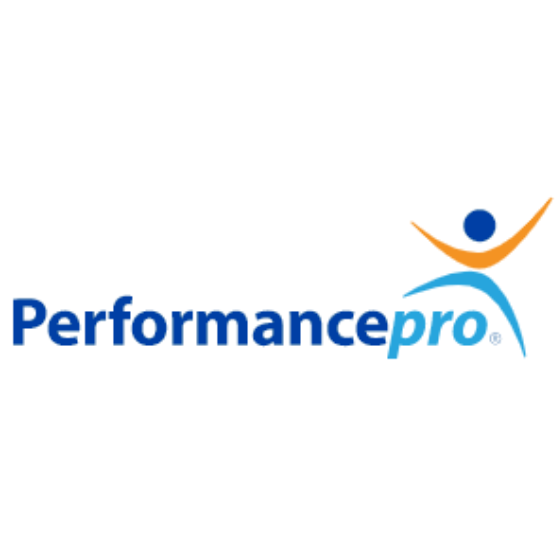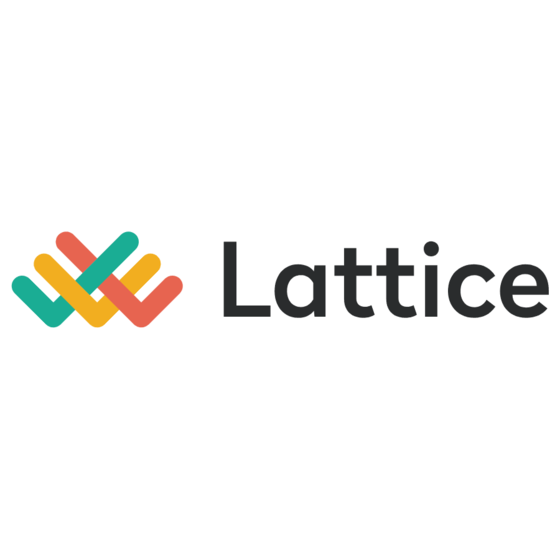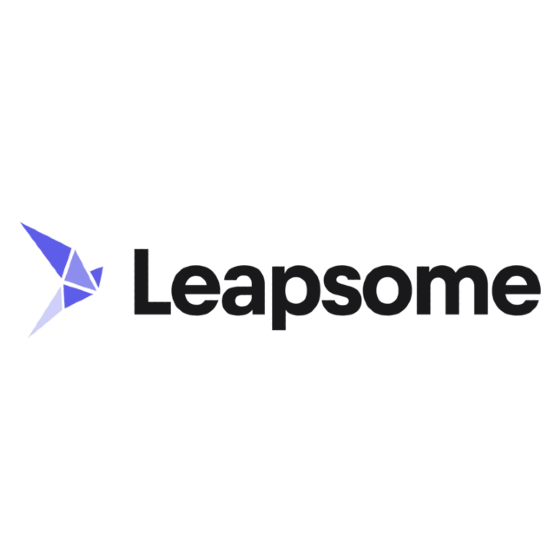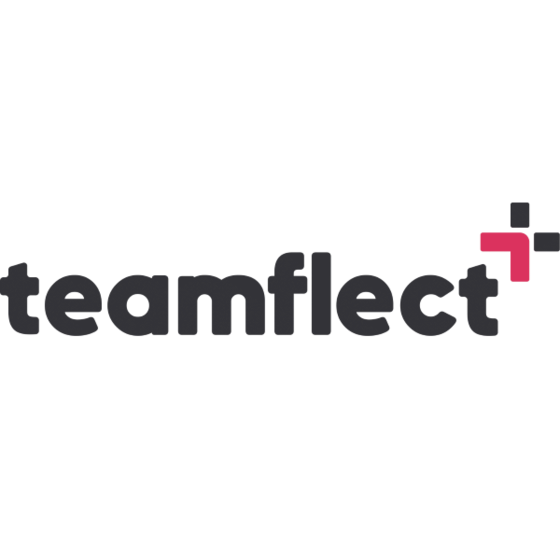Lattice is a performance management software and HRIS that offers multiple modules and pricing tiers you can bundle to fit your needs, with optional add-ons.
Lattice helps you run reviews, set goals/OKRs, collect feedback, manage 1:1s, and track engagement and results so you and your team can grow.
Across this category, most tools charge per user with tiered plans and paid add-ons; Lattice follows that common model.
How Much Does Lattice Cost?
Lattice starts at $11 per user per month. That’s the entry point; you’ll choose modules and pay annually.
Pricing is public and modular, sold per seat with annual contracts and optional add-ons.
You pick products like Performance, Goals/OKRs, Engagement, Compensation, and HRIS with plans varying by feature depth and admin controls.
It suits mid-sized and enterprise teams; you can request a live demo and view self-guided tours. Versus lighter tools, pricing sits mid-range to premium.
Lattice Plans & Pricing Tiers
Lattice prices its platform modularly, with per-seat, annual billing across two cores—Talent Management and Foundations—and add-ons that expand depth.
Tiers are defined by features and product scope; pricing can vary based on modules like Engagement, Grow, Compensation, HRIS, Payroll, and Time Tracking.
Here’s how the plans stack up:
| Plan Name | Pricing (Monthly/Annual) | Key Features Included | Best For |
|---|---|---|---|
| Talent Management | $11/month | Performance reviews, Feedback & Praise, 1:1s, Goals/OKRs, Talent reviews, Core AI | Mid-sized to enterprise teams starting with performance and goals |
| Engagement | $4/month | Pulse, Surveys, eNPS, Onboarding & Exit, PPT export, AI insights | Companies wanting structured employee feedback |
| Grow | $4/month | Competencies, Career tracks, Growth plans, Manager guidance | Teams investing in career development |
| Compensation | $6/month | Benchmarking data, Cycle management, Pay change statements, Comp bands, Budget analytics | Orgs running structured comp reviews |
| Core AI | $6/month | Personalized growth plans, IDPs, 1:1 coaching prompts, Review support | Teams seeking AI assistance for development |
| Foundations | $11/month | Core HR operations, People data foundation, Admin controls, Integrations | HR teams standardizing core workflows |
| HRIS | $10/month | Employee records, Onboarding, Time off, Report builder, Workflows | Teams centralizing HR data |
| Payroll | $6/month | US payroll, Tax filings, Integrates with HRIS, Admin controls | US-based orgs needing payroll |
| Time Tracking | $2/month | Time clock, Timesheets, Payroll-ready exports | Hourly or project-based teams tracking time |
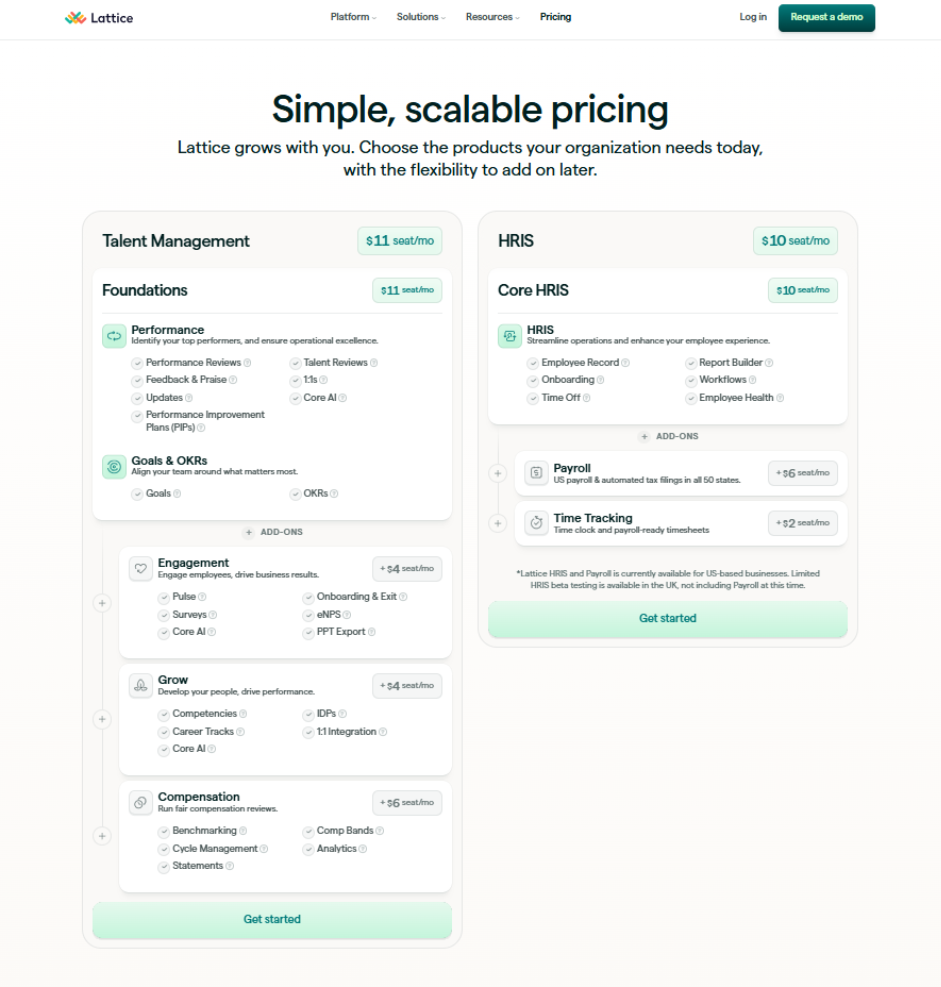
How to Choose The Right Lattice Plan
You don’t need every module to get value—focus on the jobs you must do now, and what you’ll need in 12 months.
When you’re choosing performance management software, weigh integrations, data needs, onboarding effort, and who on your team will own it. I’ll help you map needs to the right modules and avoid surprise costs.
Evaluate your industry-specific needs, features or integration requirements as well as security, compliance and scalability
To pick well, weigh your industry needs, feature and integration requirements, and your security, compliance, and scalability expectations:
Evaluate Your Industry-Specific Needs
- Do you need HRIS or payroll in the same suite? If you want one vendor for people data, payroll, and reviews, you’ll lean toward Lattice’s HRIS, Payroll, and Time Tracking modules to reduce handoffs.
- Are you in a regulated space (healthcare, finance, public sector)? You’ll want audit-friendly reviews, clear documentation, and controlled access; some features may sit behind higher tiers or add-ons.
- Do frontline or hourly teams need-mobile-first tools and time capture? Time Tracking and simple feedback flows matter; avoid paying for advanced talent features your managers won’t use.
- Do you run structured comp cycles? If you do annual merit or promotion cycles, you’ll likely need the Compensation module; budget for it early.
- Do you operate in multiple regions? You’ll need consistent review templates, localized settings, and clean org data from HRIS; gaps here create admin rework.
- Do managers need career paths and leveling? Career frameworks live in development modules; if you skip them, expect heavier manual work in docs and sheets.
- Do you require survey programs for onboarding or exits? Engagement features cover this; without them, you’ll rely on separate tools and exports.
Evaluate Feature or Integration Requirements
- Which systems must Lattice connect to (HRIS, payroll, SSO, chat, BI)? If a required integration lives on higher tiers or needs IT time, your costs and timeline go up.
- Which modules do you actually need this year? Performance, OKRs & Goals, Engagement, Compensation, HRIS, Payroll, Time Tracking, and AI are modular—each add-on raises total spend.
- Do you need role-based permissions and approvals? If your org structure is complex, confirm admin controls are in your plan to avoid manual work and risk.
- How will you run reporting and exports? If you need scheduled or detailed exports to finance/BI, check that data access isn’t gated to upper tiers.
- Do you need automated provisioning (SSO/SCIM)? Without it, IT or HR will manage users by hand, which doesn’t scale.
- What’s your review and survey cadence? High-frequency cycles can increase admin time; ensure templates, automation, and workflows are included in your plan.
- Do you require API access or a sandbox? Some vendors limit these to premium tiers; that impacts integrations and testing.
Evaluate Security, Compliance & Scalability
- What certifications and attestations do you need? If you require things like SOC 2 or ISO, confirm scope and documentation; missing pieces can block legal approval.
- Do you need SSO/MFA and detailed audit logs? These are often tiered; if they’re gated, you may need a higher plan for security sign-off.
- How do you handle data residency and DPAs? Legal may require specific terms or regions; get this early to avoid delays at procurement.
- What seat growth do you expect in 12–24 months? Per-seat pricing plus new modules adds up; model costs with your projected headcount.
- What support level do you need (onboarding, SLAs, success)? Premium support may be plan-dependent; if you need guaranteed response times, factor that into selection.
- Will you run complex comp or calibration cycles? Larger orgs often need advanced controls and approvals; these typically live in higher-value modules.
- Do you need uptime guarantees or rate limits defined? If you rely on APIs or real-time workflows, confirm limits and SLAs before you commit.
Lattice Pricing Compared to Alternatives
I view Lattice as mid-range to premium versus peers. It’s feature-rich and modular, so ROI is strongest when you bundle performance, goals, engagement, and comp. If your team only needs basic reviews, cheaper point tools will cost less.
Some integrations and advanced features are gated to higher plans or add-on modules, which can raise your total.
Mid-sized and enterprise companies—especially those running structured review and comp cycles or operating across regions—tend to get the most value.
Comparison Chart: Lattice vs. Alternatives
Wondering how Lattice pricing compares to other performance management software? Here’s a comparison chart that breaks down the costs of other performance management software side-by-side:
| Tool | Best For | Trial Info | Price | ||
|---|---|---|---|---|---|
| 1 | Best for evaluating individual competencies | Free demo available | From $2 to $7/employee/month | Website | |
| 2 | Best for employee lifecycle performance | Free demo available | Pricing upon request | Website | |
| 3 | Best for customized performance review processes | Free demo available | From $5 to $10/user/month | Website | |
| 4 | Best for incorporating multiple feedback sources | Free demo available | From $11/seat/month | Website | |
| 5 | Best for continuous 1:1 performance feedback | Free trial + demo available | From $29/month | Website | |
| 6 | Best for flexible review cycles | Free trial available | From $5/user/month | Website | |
| 7 | Best for AI-powered performance insights | 14-day free trial | From $2/employee/month | Website | |
| 8 | Best for scalable review processes | 30-day free trial | From $3 to $8/user/month | Website | |
| 9 | Best for development-focused performance | 14-day free trial | From $8/user/month | Website | |
| 10 | Best for performance management in Teams | Free demo available | From $7/user/month | Website |
What Affects Lattice Pricing?
Your price shifts with seats, which modules you buy, and how much onboarding/support you need—these choices change contract size, timelines, and what legal/IT must approve:
- Number of users (seats) Per-seat billing means headcount drives cost; growth mid-year can trigger true-ups. Ask how seat changes are handled during the term.
- Modules selected Adding Engagement, Grow, Compensation, HRIS, Payroll, or Time Tracking increases spend. Bundles can change your effective rate.
- Feature tier Advanced admin, security, or analytics may sit on higher tiers. If you need those for compliance or scale, expect a bigger quote.
- Integrations and security SSO/SCIM, HRIS connectors, and API access can be gated to higher plans. If IT needs them, your plan choice (and cost) goes up.
- Implementation and onboarding HRIS/payroll setups require data migration and configuration. You may need paid onboarding packages or longer timelines.
- Support requirements Premium support, SLAs, or a dedicated CSM often cost more. If you need guaranteed response times, budget for it.
- Minimum contract value Many deals include a yearly minimum; small teams can hit the floor price before per-seat math helps. Confirm minimums and terms.
- Contract term and billing Annual contracts are standard; multi-year or annual prepay can lower rates. Month-to-month flexibility usually costs more.
- Geography and payroll US payroll adds module fees; multi-region orgs may need extra settings and data work. That can affect both plan and services.
- Review/survey cadence and comp cycles Frequent reviews, always-on surveys, or complex comp cycles demand automation and controls in higher packages. If you run these often, plan for those features.
Additional Costs to Watch Out For
Vendors don’t always publish their full cost structure, so teams often hit surprise fees after signing; knowing what’s not in Lattice’s base price helps you avoid budget overruns—consider drafting a performance management software RFP to surface these items early:
Setup Fees or Onboarding Costs
According to Lattice’s pricing page, there are no extra implementation or change‑management fees for performance products, but HRIS has two implementation packages.
Ask what each HRIS package includes (data migration, workflows, integrations) and who does the work. If you’re connecting payroll or time tracking, confirm whether configuration help is bundled or billed separately. Get timelines and costs in writing before you sign.
Premium Support Tiers
Lattice says every contract includes dedicated human support, but you should confirm what “standard” covers.
Ask if paid SLAs, priority queues, or a named CSM are extra or tied to higher plans. If your team needs 24/5 coverage or faster response, those terms can affect price. Request the exact support entitlements on your order form.
Custom Integrations or API Usage
Lattice lists many native integrations (e.g., Slack, Jira), but bespoke connections may require services time. Ask whether API access, sandboxes, or SCIM provisioning are included in your plan or gated to upper tiers. Clarify rate limits and who maintains the integration post‑launch. Scope this work up front so it doesn’t become a separate SOW.
Regulatory or Compliance Costs
If you need SSO, SCIM, audit logs, or specific attestations, those capabilities may live on higher tiers. Legal reviews (DPA, security exhibits) can extend timelines and push you to pricier plans.
Ask whether required controls are included at your target tier and whether any compliance docs come with added fees. Get security features and obligations listed in the contract.
Annual Minimums and Contract Terms
Lattice’s pricing page notes a minimum annual spend (billed annually in USD). Small teams may hit the floor price regardless of seat count.
Confirm mid‑year true‑ups for added headcount and whether downgrades are allowed. Ask for the minimum, discounts for multi‑year, and any renewal escalators.
HRIS Implementation Packages
HRIS rollout often includes org data cleanup, workflow design, and time‑off policies. Lattice indicates two implementation options; verify what’s included and what counts as out‑of‑scope. If you need migration from multiple systems or complex approvals, expect added services. Tie payments to milestones to control spend.
Add‑On Modules and Bundles
Modules like Engagement, Grow, Compensation, HRIS, Payroll, and Time Tracking are priced separately. Bundles can change your effective rate, but they also raise your contract value. Map must‑have workflows so you don’t buy modules you won’t use in year one. Ask for a line‑item breakdown per module and any bundling discounts.
Security Features and SSO/SCIM
Enterprise security often hinges on SSO, SCIM, role‑based access, and detailed audit trails. If these are gated to higher tiers, your plan choice—not just seat count—will drive price. Confirm inclusion, provisioning method, and any one‑time setup. Ensure your MSA reflects these requirements to avoid later upsells.
Is Lattice Worth the Cost?
In my opinion, Lattice is worth it when you run multiple products together. If you pair reviews, goals, engagement, and comp, you cut busywork and get cleaner data.
You’ll see the best ROI if you want HRIS or payroll connected to performance. It also pays off if you use the built-in tours and AI to ramp managers fast.
- Dedicated human support is included; performance modules don’t carry extra implementation fees.
- Modular pricing with a published annual minimum; tours and demos are easy to access.
- SSO, Slack/Teams, and major HRIS integrations reduce setup risk and manual work.
Lattice Pricing FAQs
Here are answers to a few common questions about Lattice pricing:
Does Lattice offer a free trial or pilot?
I haven’t seen a traditional free trial advertised. You can take free interactive product tours and book a live demo. If you need a proof-of-concept, ask sales whether they’ll support a limited pilot for your use case.
Are discounts available for nonprofits or multi-year contracts?
Lattice has publicly shared that it offers free access to nonprofits working on racial and social equality via its sales and customer experience teams. I haven’t found public info about multi-year discounts; you’ll need to ask sales directly.
What’s the average onboarding time?
Lattice says enterprise implementations can take up to eight weeks. If you add HRIS or payroll, expect more time for data migration and approvals; lighter performance-only rollouts tend to move faster.
Is the pricing likely to increase after the first year?
Lattice doesn’t publish renewal increase policies. Contracts are annual, so I recommend asking for a renewal cap or fixed-rate language in your order form.
Are there implementation or setup fees?
For performance products, Lattice notes no extra implementation or change-management fees. For HRIS, there are two implementation packages; confirm scope (data migration, workflows, integrations) before you sign.
What are the billing terms and minimum annual spend?
Lattice bills annually in USD and lists a $4,000 minimum annual agreement. That floor can matter for small teams, so confirm seat counts, modules, and any mid-year true-up rules.
What’s Next:
If you're in the process of researching performance management software, connect with a SoftwareSelect advisor for free recommendations.
You fill out a form and have a quick chat where they get into the specifics of your needs. Then you'll get a shortlist of software to review. They'll even support you through the entire buying process, including price negotiations.



